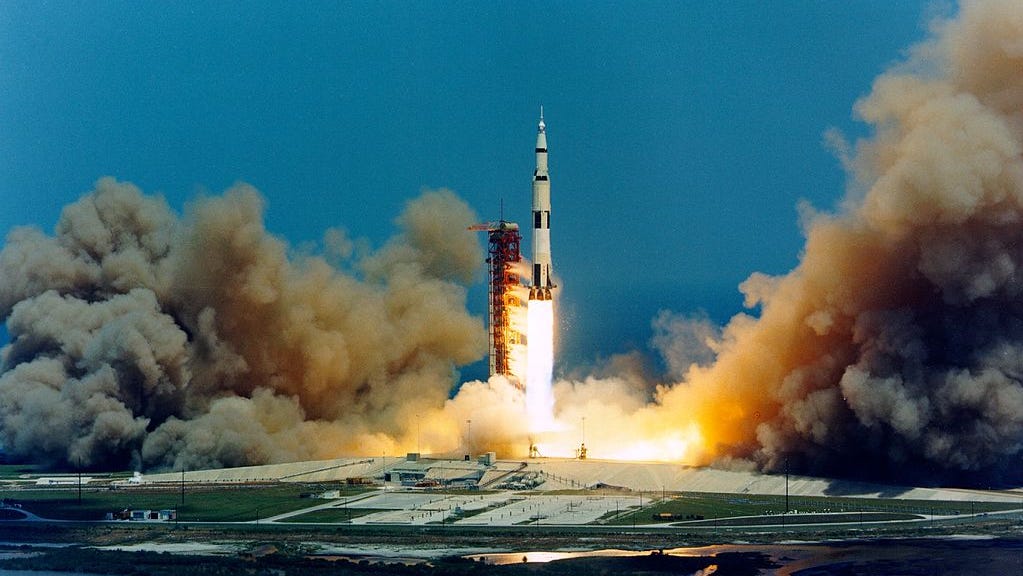Moon landing was real, even if this conspiracy theorist didn’t understand spacesuits | Fact check
The claim: Moon landings did not happen since spacesuits couldn’t have protected astronauts in space
A Nov. 22 Facebook post (direct link, archived link) shows images of astronauts on the moon with a quote attributed to the late conspiracy theorist and author William Cooper.
“No man has ever ascended higher than 300 miles, if that high, above the earth’s surface,” reads part of the quote. “No man has ever orbited, landed on, or walked upon the moon in any publicly known space program. If you doubt this please explain how the astronauts walked upon the moon’s surface enclosed in a space suit in full sunlight absorbing a minimum of 265 degrees of heat surrounded by a vacuum.”
The post caption says, “This is just ONE of MANY Obvious reasons we know men never walked on the moon.”
The post was shared more than 1,000 times in three weeks.
More from the USA TODAY Fact-Check Team:
Our rating: False
There’s plenty of evidence that astronauts landed on the moon, including moon rocks, scientific studies and images. Spacesuits have been designed and built to protect astronauts in space.
NASA collected decades’ worth of evidence of moon landings
NASA conducted 14 Apollo missions to the moon between 1963 and 1972. There is ample evidence those missions reached the moon, including photos and videos captured by astronauts on the moon, modern satellite photos of lunar vehicle tracks and other mission artifacts and lunar data collection from devices Apollo astronauts left on the moon.
Astronauts who walked on the moon also brought back a collective 842 pounds of lunar rocks and samples.
Kathryn Hambleton, spokesperson for NASA, told USA TODAY that because of the Apollo missions, scientists worldwide have been able to study those samples for decades to learn more about the moon.
“From these rocks, we’ve learned that the moon was once part of the earth, the moon is about 4.5 billion years old, and that most of the moon’s craters are caused by impact, not volcanism,” Hambleton said.
As further evidence of the moon landings, Hambleton pointed to seismometers left on the moon’s surface, which have since recorded moonquakes.
NASA’s Lunar Reconnaissance Orbiter has also taken images of the various Apollo moon landing sites.
Fact check:
As for spacesuits, they have been engineered to protect astronauts in space and on the moon. They insulate astronauts from radiation and heat and cold, provide oxygen to breathe and remove the carbon dioxide astronauts breathe out. The suits also have visors to protect astronauts’ eyes from harsh sunlight.
“Under the suit, astronauts wear another piece of clothing,” reads a section of NASA’s website about spacesuits. “It covers their body except for the head, hands and feet. Tubes are woven into it. Water flows through the tubes to keep the astronaut cool.”
USA TODAY has debunked several claims about the moon landing, including oneimplying that none of the Apollo missions could have happened because a lunar module can’t travel between Earth and the moon. Another Facebook post falsely claimed the moon would’ve been too bright for astronauts to land on.
USA TODAY reached out to the social media user who shared the post for comment but did not immediately receive a response.
Our fact-check sources:
- Kathryn Hambleton, Nov. 12, Email exchange with USA TODAY
- NASA, accessed Nov. 12, Lunar Rocks and Soils from Apollo Missions
- NASA, May 13, 2019, Shrinking Moon May Be Generating Moonquakes
- NASA, accessed Nov. 12, Apollo Landing Sites
- NASA, March 13, 2023, What is a Spacesuit?
- AZ Central, Oct. 1, 2020, How William Cooper and his book ‘Behold a Pale Horse’ planted seeds of QAnon conspiracy theory
- Southern Poverty Law Center, March 5, 2002, Conspiracy Theorist Slain in Police Shootout
Thank you for supporting our journalism. You can subscribe to our print edition, ad-free app or e-newspaper here.
USA TODAY is a verified signatory of the International Fact-Checking Network, which requires a demonstrated commitment to nonpartisanship, fairness and transparency. Our fact-check work is supported in part by a grant from Meta.



